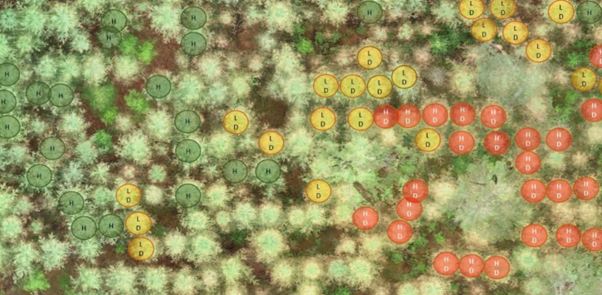
Saving Sweden’s forests with help from AI
Thanks to a grant from Microsoft’s AI for Earth program, Skogsstyrelsen, the Swedish Forest Agency, is using Artificial Intelligence (AI) to identify trees damaged by the western larch case-bearer.
When you think of Sweden, you may well think of trees. That’s no surprise, given that almost 70 percent of the country is covered by forests. Sweden takes great pride in protecting these precious natural resources, applying a sustainable forestry model that prevents over-exploitation and mandates the replanting of trees. In fact, for every one tree felled in Sweden, three new ones are planted. But Sweden’s forests are under threat from a new enemy.
Coleophora laricella, also known as the western larch case-bearer, is a moth that likes to feed on one particular kind of tree: the larch tree. So far, the western larch case-bearer has caused the most damage in the Swedish south-east, in the province of Västergötland. But unchecked, its impact is likely to spread even further due to climate change, since the western larch case-bearer prefers warmer climates.

To understand and address the level of damage this species causes, the Swedish Forest Agency, Skogsstyrelsen, has been using AI to develop a solution.
A test project, part of Sweden’s Forest Lab, ran from December 2019 to February 2020, with Microsoft providing Azure cloud services support to build the AI model. This project is a recipient of a Microsoft AI for Earth grant, which support projects using AI to change the way people and organizations monitor, model, and manage Earth’s natural systems.
The test project used around 1,600 drone images from Västergötland, assigned over 80,000 markings, to teach the AI model to identify all larch trees and classify them as either healthy or damaged. The aim is to allow forest owners to quickly identify areas of forests under attack, and remove any severely affected trees to prevent further spread of the western larch case-bearer.
This is vital not only to protect the wider forests as a whole, but to limit the economic impact of tree damage. One cubic meter of Swedish forest is estimated to be worth about EUR 27, and the country’s total forest volume is worth almost 90 billion euros. There is no doubt that trees account for a significant proportion of the country’s overall GDP.
Daniel Akenine, Chief Technology Officer, Microsoft Sweden
This project has the potential to make an impact beyond Sweden, which is why Skogsstyrelsen plans to make its pilot data, and the finished AI solution, available elsewhere. The western larch case-bearer is found more widely across Central and Northern Europe but it has also made its way to North America, where it is considered an invasive species. This tool could therefore help identify and counteract infestations in new areas around the world.
Meanwhile, back in Sweden, promising results from this test project have led Skogsstyrelsen ecologists to launch two new projects aimed at using the same AI models to identify forests affected by elm disease and forests under attack from bark beetles – both of which are aggressive species that can have a devastating impact. Now, with help from technology, the forests are fighting back.

